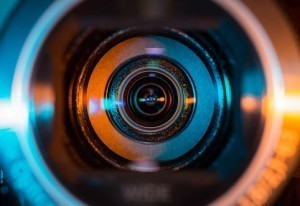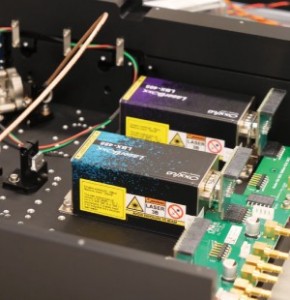
Machine vision is one of the most helpful automation technologies for many industrial workflows. While these object recognition systems can streamline quality control processes, guide autonomous robots and more, many still rely on basic rules-based algorithms. Deep learning advances this technology, unlocking its full potential.
The machine vision market could grow to be worth $18.65 billion by 2030, an over 50% jump from its 2021 value. Organizations that want to make the most of this growth should consider how deep learning takes this technology to new heights.
What Is Deep Learning?
Deep learning is a subset of machine learning, which is a type of artificial intelligence (AI). Machine learning refers to building and deploying algorithms that recognize and interpret patterns in data. A deep learning algorithm approaches these tasks by applying a logic structure similar to how the human brain works.
Unlike more basic machine learning models, deep learning can learn from its past mistakes, making it more accurate over time. If a new event proves how an old problem-solving approach didn’t work or that a trend doesn’t apply in every scenario, deep learning algorithms adjust their processes accordingly.
In a machine vision context, deep learning applies complex, multi-step problem-solving to identify or classify objects. As a result, they know a lot more about an item than whether it simply meets certain criteria.
How Deep Learning Advances Computer Vision Processes
Conventional, rules-based machine vision can identify objects by comparing them to rigid, pre-defined parameters of what a given item looks like. Deep learning does the same, but it can also consider a far wider range of data, including past trends and whether they can accurately measure a given parameter. Here’s how that lets deep learning put machine vision into practice.
Improved Accuracy
Rule-based algorithms are only as reliable as their parameters are comprehensive. They may classify a house as something with walls, a roof and a door, but that approach could lead to identifying a car as a house. Since deep learning adjusts to new data, it can be more nuanced in its classifications, making it more accurate.
That nuance can also help deep learning maintain accuracy in sub-optimal conditions. For conventional machine vision to work, lighting systems must consistently meet three criteria — maximizing contrast for features of interest, minimizing contrast elsewhere and providing a measure for robustness. Without that lighting, rules-based algorithms may be unable to identify anything.
Since deep learning can consider more factors, it may also adapt to poor conditions. It can recognize that light levels may make one identification method unreliable, leading it to use another. Consequently, it can deliver more consistently accurate results.
More Versatility
Deep learning also makes computer vision more flexible. In addition to being able to adjust to various conditions, these algorithms can adapt to entirely new workflows. That lets manufacturers use the same quality control system for different products.
Since rules-based algorithms focus on specific parameters, they’re inflexible. A rules-based machine vision system would require an entirely new set of rules to monitor quality in a different product, as what constitutes a pass or failure isn’t the same between them. Consequently, adapting such an algorithm takes almost as much work as programming a brand new one.
Deep learning models, by contrast, can adjust themselves when presented with new information. These algorithms could compare the two workflows to see what’s similar between them, using old experience to learn faster while accounting for the new data. As a result, companies can apply them to multiple workflows with minimal disruption.
Accelerated Development
Deep learning can also accelerate the implementation timeline of machine vision systems. These models take longer to create initially, as they’re far more complex, but once the base model exists, end users can configure and adjust them in less time.
This acceleration comes from deep learning’s flexibility and ability to teach itself. Using a practice called semi-supervised learning, these algorithms can use a small amount of labeled data to teach themselves to label other data. That means some models can produce remarkable accuracy with half the training data of a conventional algorithm.
With these reduced data needs, organizations can customize and implement deep learning with minimal time and effort. As ready-made base models become increasingly common, applying deep learning will accelerate over time.
When to Use Deep Learning in Machine Vision
Despite these many benefits, deep learning isn’t always the best option for machine vision applications. Rules-based approaches are still more affordable and are accurate enough for highly repetitive, predictable workflows.
If a facility only needs to automate quality control for one product type, a rule-based algorithm may be sufficient as its lack of flexibility won’t be an issue. Similarly, work areas with consistently good lighting conditions and relatively simple machine vision processes don’t necessarily need deep learning.
However, more complex or disruption-prone workflows need advanced reliability and versatility. If a computer vision system must analyze multiple data points or distinguish between several different objects, deep learning is more dependable. Ideal use cases typically include things outside of predictable quality control environments, like guiding autonomous robots.
How to Apply Deep Learning to Machine Vision
Organizations wanting to take advantage of deep learning’s potential in machine vision should start by determining their needs. What does the system need to recognize? How much variation will it see and how fast must it work? Answers to questions like these will help companies set goals to find ideal models and gauge their performance.
Next, businesses should review their computing experience and budgets, which may narrow their options. A lack of employees with relevant skills and cost restrictions are the most common barriers to machine learning adoption, so companies should account for them.
Once organizations know what they need and what factors may hold them back, they can explore available solutions. Companies with more machine learning experience may be able to build a model from scratch, while many others may need a more comprehensive off-the-shelf solution.
After adjusting their deep learning system to their unique needs, businesses should set relevant benchmarks. Comparing results to these benchmarks regularly will help reveal the project’s efficacy, informing more effective expansion and implementation in the future.
Deep Learning Advances Machine Vision in Many Ways
Deep learning may not replace rules-based computer vision entirely, but it advances processes in several scenarios. Companies that can afford and have the skills to manage these systems can experience considerable improvements from implementing them. As this technology becomes more accessible, it could revolutionize the field of machine vision.
Written by Emily Newton, Editor-in-Chief of Revolutionized, an online magazine celebrating innovations in the industrial sector.































 Back to Features
Back to Features



























